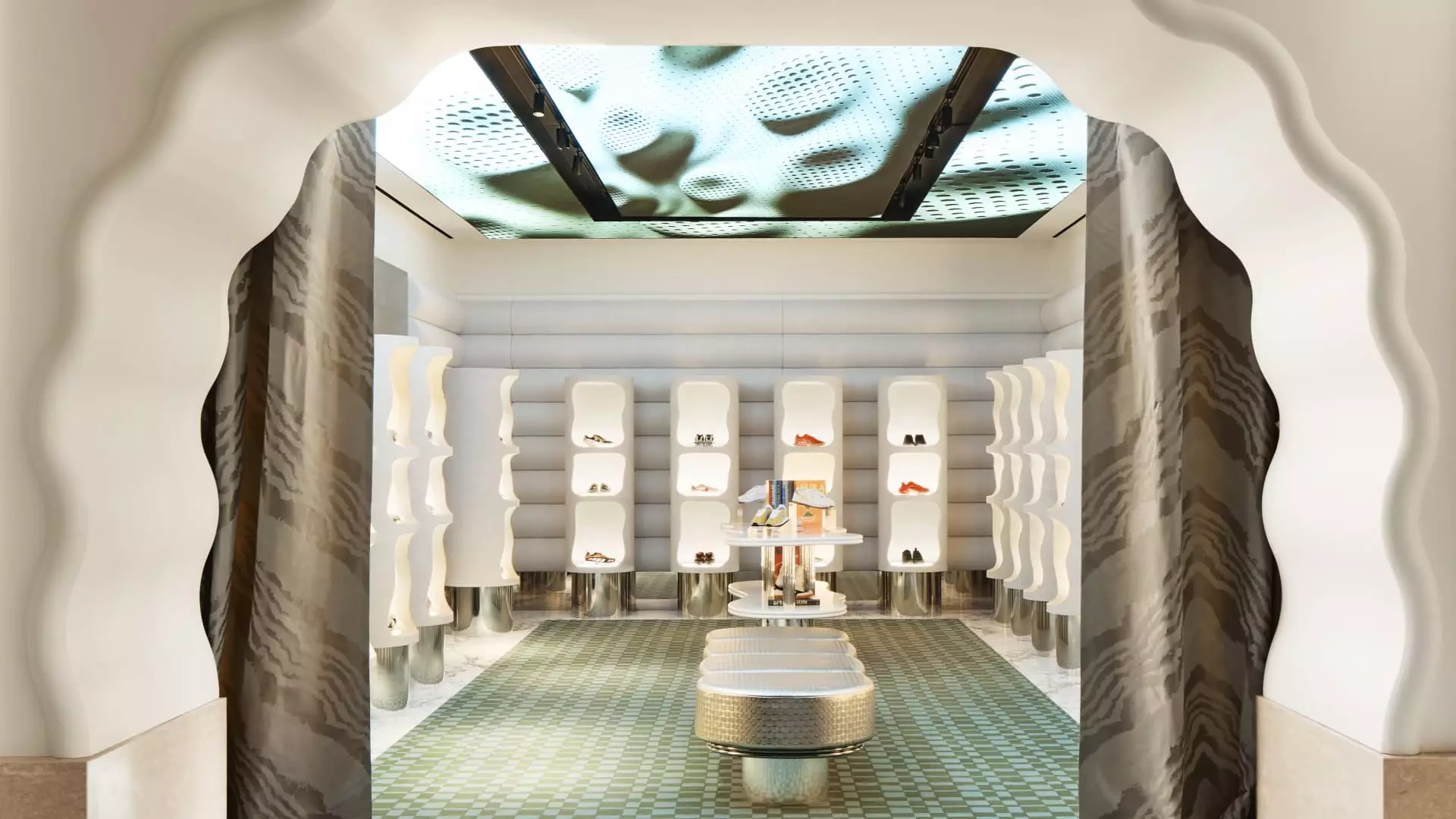The recent arrival of Printemps in New York City is nothing short of audacious. Anchoring its first U.S. location in the illustrious Financial District, this French emblem of luxury is strategically tapping into a bustling metropolis known for its unyielding spirit toward consumerism. By opening its doors on the cusp of spring, Printemps seems to embody renewal and resurgence, a charming synchronicity that serves both as a marketing strategy and a cultural comment on the evolving landscape of luxury shopping post-COVID-19.
Flaunting an impressive 55,000 square feet, Printemps’ new flagship is not merely a retail space; it’s a curated experience enveloped within the grandeur of a historic Art Deco skyscraper. Such a juxtaposition speaks volumes about the opulent narratives that both the brand and location convey, inviting patrons to step into what can only be described as a luxurious Parisian dream world nestled within the chaos of New York City.
Redefining Luxury: A Step Beyond Merchandise
While fashion retailers abound across Manhattan, Printemps sets itself apart with a unique blend of traditional French elegance and modern experiential retailing. The store features a myriad of both popular luxury brands and elusive French talents, such as Joseph Duclos, offering shoppers an array of options that they won’t find elsewhere in the U.S.
Indeed, this savvy selection strategy goes beyond mere consumer allure; it taps into a yearning for authenticity that many affluent buyers now prioritize. In an age where even the wealthiest consumers are reevaluating their spending habits, this intentional design casts Printemps not just as a store but as a cultural destination. Here, shoppers can immerse themselves in the sensation of opulence, heightened by features like the “shoe forest” nestled in the magnificently restored Red Room, offering an experience that goes far beyond simply acquiring products.
Understanding the Diminished Luxury Market
However, Printemps’ entrance into the U.S. comes during a precarious time for the luxury market at large. Luxury spending has slowed considerably due to inflation and shifting priorities amidst economic uncertainties. As recent reports indicate, even affluent customers are scaling back their discretionary purchases, raising the question: is it wise for Printemps to launch now?
In fact, it seems that the printouts of high-end retail’s growth narrative might need rewriting. The once-stalwart growth rates of 27% from 2020 to 2021 have dramatically slowed, and projections now suggest a more cautious growth trajectory of just 1% to 3% annually through 2027. This context leaves Printemps with the daunting challenge of not just attracting but also retaining a consumer base that is now more judicious in its spending.
The Allure of In-Person Shopping
Yet, the allure of physical retail may offer an unquantifiable advantage. According to retail experts, there exists an ineffable charm in the luxury shopping experience inaccessible online, epitomized by the hospitality and service standards that come with visiting a high-end store. Consumers often desire the feeling of exclusivity and personal touch that a brick-and-mortar store can provide. Printemps is positioning itself as an intersection of luxury and community, offering not just a place to shop but an environment designed for social interaction.
The addition of unique features like fine dining led by culinary luminary Gregory Gourdet adds complexity to the Printemps brand identity, promising consumers an all-encompassing stylish experience that spans across all senses. Such creative initiatives are particularly astute in attracting tourists and aspirational buyers, who may be more inclined to visit as part of a larger outing rather than simply for a shopping spree.
Embracing the Aspirational Consumer
Printemps has not neglected the increasing significance of catering to those American customers who yearn for luxury without the heavy price tags. An exciting component of their strategy is the integration of more approachable items aimed at a demographic that seeks elegance without extravagant expenditure, particularly tourists and new shoppers looking to experience the brand.
By doing so, they seem to strike a delicate balance between exclusivity and inclusivity, appealing to a broader audience while nurturing a loyal base of high-spending consumers—an astute maneuver that could set a precedent for other luxury brands looking to navigate an increasingly complex retail environment.
Printemps’ arrival in NYC isn’t just a branding move; it’s a cultural dialogue about the future of luxury retail in a post-pandemic landscape. As the world hunches over to skim through the remnants of historical consumer behavior, Printemps has bravely debuted a model that could inspire the sector to embrace reinvention and creativity in the face of adversity.

